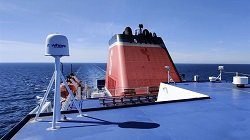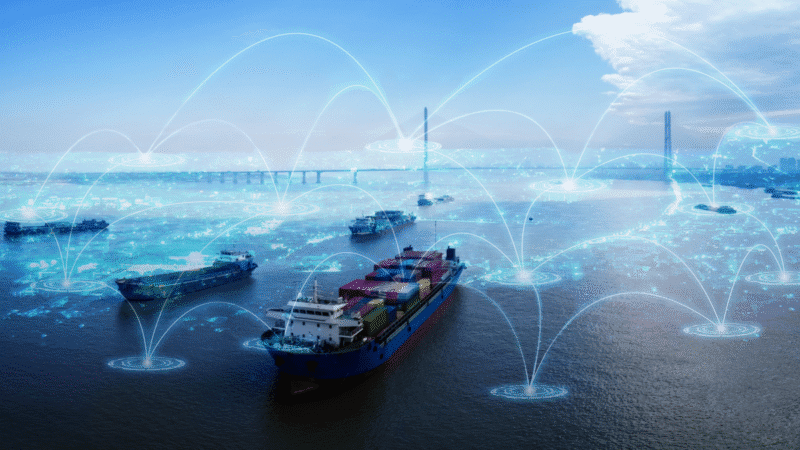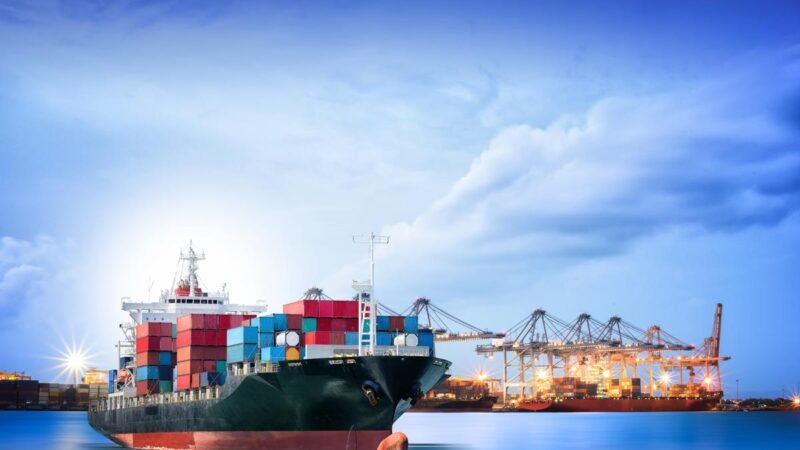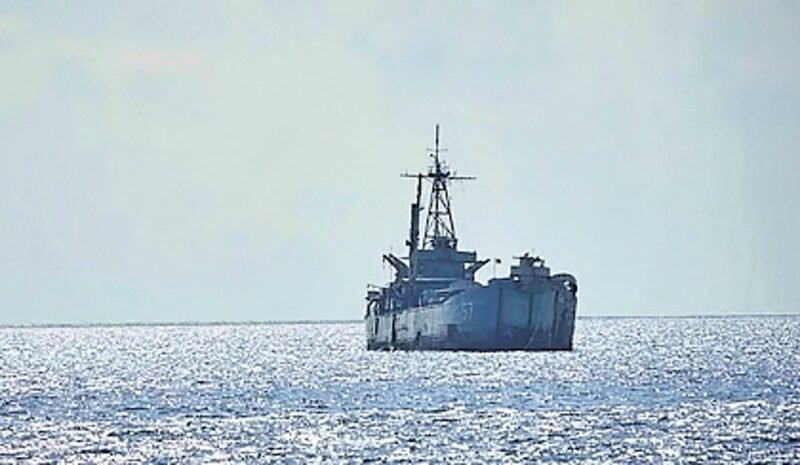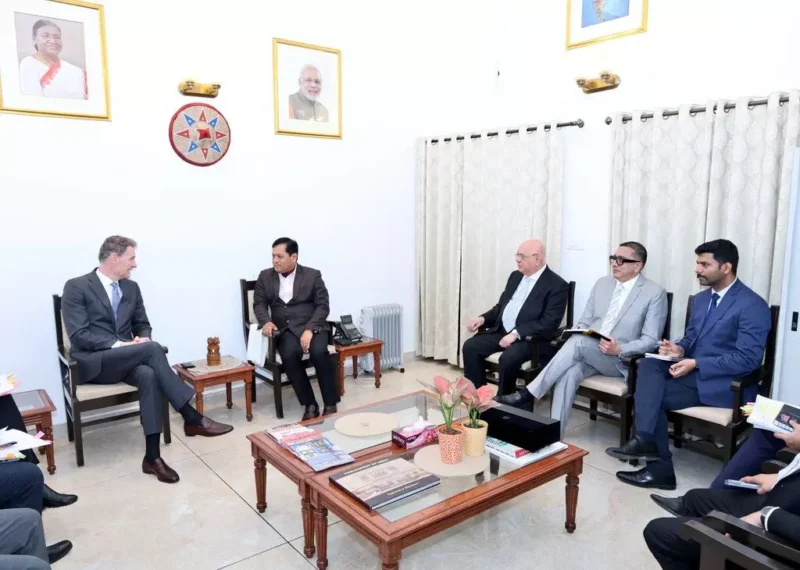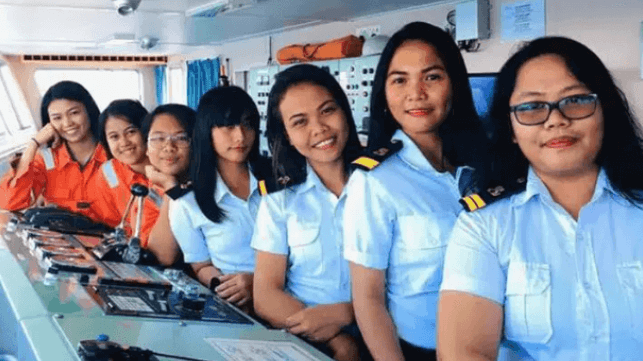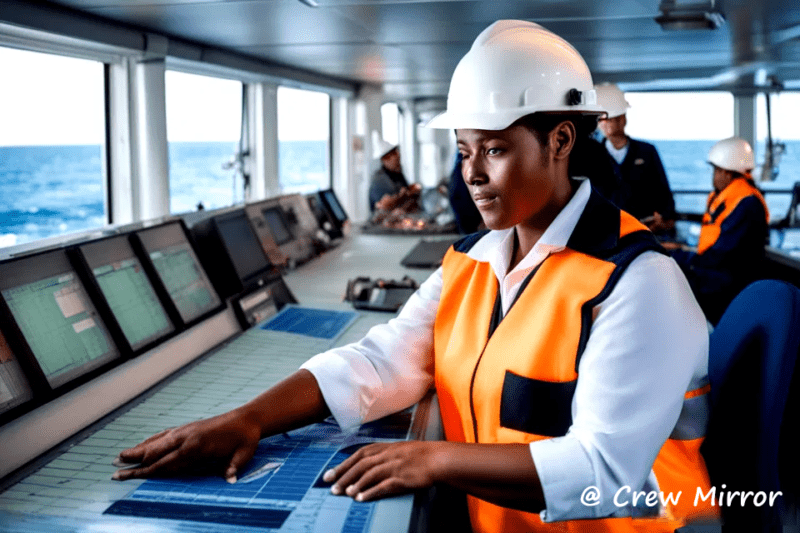Following Stories compiled in this News Digest for the week from 28 Nov 2022 to 04 Dec 2022 in descending order
- Vast scope for India to grow in the maritime sector, say scientists
- Sailors dig out world’s most remote post office in Antarctic
- £10m to support seafarers in crisis
- Re-framing the human factor in shipping
- India: Kerala Maritime Board draws up big plans to augment coastal shipping
- Stena Line to install high-speed wifi on 38 ships
- Offshore Industry Is Moving Up And Out Of The Doldrums
- Shipping unprepared for lithium battery fires
- Site for underwater city found in Ulsan
- How would an ammonia spill affect the marine environment?
- New offshore logistics mega-base to be built in UAE
- Kongsberg Maritime launches new rudder system
- India’s container business can no longer be contained
- WISTA UK raises funds for female seafarer training at charity Black Tie
- Wartsila working with Hycamite on onboard production of hydrogen from LNG
- Deadlock Deepens At Adani’s South India Port As Protesters Block Trucks
- Seafarers Appeal To Goa Govt To Make Pension Scheme For Them Permanent
Vast scope for India to grow in the maritime sector, say scientists
04 Dec 2022
India’s vast coastline offers immense potential for exploitation of its rich marine wealth, and nurturing of marine infrastructure would go a long way in this regard, said V. Bhujanga Rao, Director General (Naval Systems), Defence Research and Development Organisation (DRDO).

Participating as chief guest at the inaugural of the 34th National Convention of Marine Engineers (NCMRE-22), Mr. Bhujanga Rao underlined the importance of adopting Industry 4.0 concepts in both operation and maintenance of maritime assets to meet global competition.
C.P. Ramanarayanan, Vice-Chancellor of the Defence Institute of Advanced Technology (DIAT), Pune, spoke on the importance of using Machine Learning techniques to enhance maritime security. DIAT was on its way to achieving an advanced underwater navigation application, he informed.
G.A. Ramadass, Director of the National Institute of Ocean Technology (NIOT), Chennai, said that NIOT was in the process of developing technologies for harvesting of living and non-living marine resources. He spoke on the challenges in the design of submersibles.
. Venkata Subbaiah, Council Member of IEI, said that maritime transport was indispensable for global trade and would continue to grow. He spoke on the importance of digitalisation of shipping and the need for marine engineers to equip themselves with the latest technologies. Reference
Sailors dig out world’s most remote post office in Antarctic
04 Dec 2022
After heavy snowfall buried some of the buildings, Royal Navy sailors came to the aid of four women who had taken jobs at an isolated Antarctic scientific base. The sailors and royal mariners spent two days digging the Port Lockroy site, the BBC reported.

Clare Ballantyne, Mairi Hilton, Natalie Corbett, and Lucy Bruzzone were chosen from a record number of applicants to manage the historic site Port Lockroy on Goudier Island, which is home to the world’s most remote post office. They had taken up the job in the month of October this year.
According to the outlet, they were preparing for the austral summer, which lasts from November to February in the southern hemisphere, with the help of three other staff members who were leaving soon, when heavy snowfall of two to four metres (6-12 ft) fell.
The ice patrol ship makes regular visits to international bases on the frozen continent, such as Port Lockroy, delivering supplies and supporting the scientific research of the United Kingdom and other countries.
The BBC said that the Warrant Officer First Class Lee “Rattler” Morgan, a member of the rescue team, was “taken aback” by “the sheer amount of snow,” adding that the buildings “had all but disappeared.”
Post a commentThe employees can now return to Port Lockroy, a former whaling station that has become a tourist attraction visited by approximately 20,000 people during the summer season. Reference
£10m to support seafarers in crisis
03 Dec 2022
The Seafarers’ Charity has announced that an incredible £10 million has been awarded by the Charity to support the safety and welfare of seafarers over the past three years. An unprecedented period which has seen seafarers’ welfare severely impacted by the COVID-19 pandemic, a war in Ukraine and also the cost of living crisis. As a long term and substantial supporter of seafarers’ welfare,

Most recently in 2022, The Seafarers’ Charity has awarded over £3 million to support maritime welfare and safety for both UK and international seafarers. This £3m package of support is for everyone who works at sea, whether that be in global shipping, international ferries, UK fishing or the professional yacht industry.
The Seafarers’ Charity has been committed to supporting seafarers’ safety and welfare for 105 years – ever since it was first established, with support from King George V, in 1917. Over the last 10 years alone, The Seafarers’ Charity has pumped an incredible total of £28 million into supporting seafarers’ welfare, with £10m awarded in the most recent 3 years of crisis – demonstrating the increased needs of seafarers at this time. Reference
Re-framing the human factor in shipping
03 Dec 2022
Shipping is a notoriously traditional industry, but the pandemic and generational change are forcing reform across relationships at sea and ashore.

Inclusivity was at the heart of the discussion on the human factors in shipping, held during the Tanker Shipping & Trade Conference, Awards & Exhibition 2022, in Athens in November. Key issued covered included training, retaining and developing new staff. The first case study of the session was presented by MTM Maritime Group global business development Dimitris Harbis, who noted that computer-based training can enhance the classroom experience. This is especially relevant as there is a shortage of teachers available.
Connectivity is a recognisable concern of millennials (those born 1981 – 1996), noted DORIAN LPG HSQE Superintendent Aristotelis Ktenas during his presentation. He suggested millennials have unique concerns about their sea-based and shore-based careers.
Ms. Elpi Petraki, President of WISTA, stressed the growing importance of data analysts in shipping. There is now a tremendous amount of data flowing from ship to shore, but, she noted, training schools are still teaching practices that were relevant 20 years ago. Reference
India: Kerala Maritime Board draws up big plans to augment coastal shipping
02 Dec 2022
Though the Vizhinjam seaport project has been caught in a stalemate for over three months, the Kerala Maritime Board (KMB) is going ahead with its ambitious project to develop coastal shipping. KMB chairman N S Pillai and chief executive officer T P Salimkumar met Cochin Shipyard Ltd (CSL) chairman and managing director Madhu S Nair on Monday to finalise the plan to build a new ship to facilitate transportation of containers from Vizhinjam to small ports in the state.

“The new ship will have the capacity to carry 80 to 100 twenty equivalent units (TEU) containers. The ship will have a speed of 10 knots and CSL has assured to build it in a cost-effective manner. The cost of the ship will be around Rs 35 crore. The MoU will be signed soon and the ship will be delivered in two years,” said Salimkumar.
The KMB has plans to purchase a bigger cargo vessel with the capacity to carry 500 TEU containers in the next four years. “The Vizhinjam port has the potential to develop as a major port and we expect huge container traffic. After analysing growth in container traffic, we will consider operating a cargo ship service from Vizhinjam to Gujarat, covering Mangaluru, Goa and Mumbai. Later we may purchase another large vessel for cargo service to the east coast,” said Salimkumar. Reference
Stena Line to install high-speed wifi on 38 ships
02 Dec 2022
Stena Line will install high-speed communications networks on up to 38 ships to enhance internet connectivity for passengers and crew.

One of the world’s largest ferry operators has contracted Nowhere Networks to install wifi on its ships operating in northern and western Europe to connect with its wireless communications networks linking ships to shore.
Deployment of hardware for these networks has started on Stena’s ships, and the passenger ship owner expects these to be completed on 38 ships by 2023.
Stena was looking to procure a faster and more reliable high-speed wifi-solution to offer its passengers and seafarers on board its ships operating in Europe as usage demand rises in the ferry sector.
More people and devices are being connected on Stena’s ships, and internet access has become more expected by passengers and crew, according to Stena.
Stena made the investment decision to install Nowhere Networks’ long-distance internet solution after evaluating the service for the past six months. Reference
Offshore Industry Is Moving Up And Out Of The Doldrums
01 Dec 2022
Speaking at the Marine Money ship finance forum in New Orleans, a representative of VesselsValue said he is optimistic about the offshore industry for the first time in years.

Day’s focus was on the Offshore Supply Vessel (OSV) market, but he was quick to say the entire market is turning positive and he believes values will continue to rise.
According to Day, there are several indicators that suggest offshore demand will increase. First, the backlog of available vessels is increasing and offshore drillers are reporting strong utilization figures. Second is the fact that few ships are getting scrapped. Finally, there are few newbuilds coming online but more laid-up vessels are getting reactivated.
One example Day provided is the HOS Rosebud, a large US-flagged PSV built in 2013. Hornbeck Offshore Services purchased the vessel in February 2022 for $10.7 million and today its estimated resale value is $18.2 million. Reference
Shipping unprepared for lithium battery fires
01 Dec 2022
Battery fires were a hot topic at Seatrade Maritime Salvage & Wreck, where panellists stressed the specific dangers of such blazes and the lack of preparedness to deal with them.

Lithium-ion batteries are commonplace in modern life and are the go-to technology for electric vehicle batteries. One failure mode of such batteries is thermal runaway, where the battery expels toxic gases and can ignite, bringing a rapid increase in temperature.
Thermal runaway can be brought on by mechanical stress to the battery, heat stress, or electrical stresses like over- or under-charging.
Where fuel and cargo fires tend to build in temperature and intensity over a matter of minutes, eventually reaching a flashpoint where surrounding materials combust, thermal runaway of lithium-ion batteries can ignite and reach flashpoint and a temperature of over 1000 degrees in a matter of seconds. Videos were shown of buses with lithium-ion batteries moving from venting gases to fierce burning within seconds.
As a rough guide, the panel said 6,000 litres of toxic vapour can be released from a 1Kw battery, and electric vehicle batteries now range in size up to 110Kw. The gases released include hydrogen, carbon monoxide, carbon dioxide, hydrogen fluoride, hydrogen cyanide, ethane, methane, droplets of organic solvents and oxides of sulphur and nitrogen.
In ro-ro ferries and PCTCs, ship designs pose further problems in an EV fire as low ceilings trap smoke and some decks are made of aluminium which can easily melt and deform in a lithium-ion battery fire.
The safety advice and firefighting recommendations of electric vehicle manufacturers were scrutinised. Manufacturers variously advise that batteries must not be submerged in water, that fires should initially be treated with CO2 extinguishers and that foam should not be used on electric vehicle fires.
While systems are being developed to deal with electric vehicle fires, the fundamentals of a vehicle on a ship add significant barriers. Closely packed vehicles increase the likelihood of fire spreading, especially when EVs are parked together, reduce access for crew and make technologies like fire blankets much less practical.
There are efforts to develop technologies to help fight electric vehicle fires, from using drones to remotely monitor fire conditions, remotely operated robots to bring firefighting equipment to the scene and even remotely controlled magnetic robots to puncture holes in the hull to allow foam injection. Reference
Site for underwater city found in Ulsan
01 Dec 2022
A test site for Korea’s first undersea city will be built in waters off Ulsan.

Image Source: koreajoongangdaily.joins.com
The metropolitan government of Ulsan, some 300 kilometers (186 miles) southeast of Seoul, and the Korea Institute of Ocean Science and Technology announced Wednesday that the sea area near Silli Port in Ulsan’s Ulju County has been chosen.
The project’s first goal will be to create a space 900 meters (2,953 feet) away from Silli Port and 30 meters below sea level where three people can live for 30 days.
The chosen area was deemed most appropriate among applications received, said the institute, based on how safely underwater structures could be placed.
The Ulsan Metropolitan Government said it plans to inject more than 5.2 billion won to develop and install a marine observation system in the city to collect and analyze data for the undersea city plan.
Once the project successfully reaches its first goal, the next goal will be to create a space 200 meters below sea level where five to 30 people can live for 77 days, according to the institute. That next goal will be a bigger site of some 11,720 square meters (about 2.9 acres). Construction for the undersea test site will be led by robots. Reference
How would an ammonia spill affect the marine environment?
30 Nov 2022
Some of the maritime industry’s most successful safety requirements were a reaction to fuel and cargo spills, but what are the risks with future maritime fuels?

A new 283-page report from Environmental Defense Fund (EDF), Ricardo PLC and Lloyd’s Register has looked ahead at the potential impact of an ammonia spill on marine ecosystems.
In the absence of real world experience, the study used modelling to predict the impact of a spill from a collision or bunkering incident on multiple marine habitats: rivers, estuaries, wetlands, coastal waters, coral reefs, mangroves, polar regions and the deep sea.
Among the key findings of the report was that ammonia spills are likely to disperse less widely and persist for shorter amounts of time in the environment when compared to spills of conventional oil marine fuels.
While the report forecast specific impacts on rivers, reefs, coastal areas, polar regions and mangroves, the impact on deep sea ecosystems remains unknown.
The ecological impact of a spill will vary greatly depending on the size of the spill as well as the temperature, time of day and weather when the spill occurs. Spills at night and in still weather would have a great impact as ammonia remains on the water’s surface for longer.
The report concludes that more research is needed into the potential impact of ammonia spills, including on the health of a ship’s crew. Reference
New offshore logistics mega-base to be built in UAE
30 Nov 2022
A huge maritime and offshore logistics and services hub will be built in Abu Dhabi, United Arab Emirates, and optimised using digital services, following an agreement between Al Masaood Energy, Columbia Group and Fameline Holding.
Al Masaood Energy will build what it is calling a “mega-base” in the industrial centre of Abu Dhabi city with jetty berthing facilities to serve the offshore logistics requirements of energy companies in the region.
This will be a 300,000 m2 complex to house future business and operational functions including headquarters, workshops, warehouses, knowledge centres, manufacturing facilities, showrooms, offshore logistics, catering areas, worker accommodation and offshore support vessels.
Further collaboration areas among the three partners include the exploration of recruitment and management of the required workforce where aspects of employee welfare will be considered, including nutrition, medical supplies, e-learning and training concepts and mental health support. Reference
Kongsberg Maritime launches new rudder system
30 Nov 2022
A new Direct Trunk Support (DTS) system for rudders launched by Kongsberg Maritime transfers the maneuvering forces from the rudder through the headbox and the steering gear deck directly into the hull structure. This promises to improve maneuvering and propulsion performance and deliver weight savings that can ultimately save fuel and help cut emissions.

Kongsberg says the DTS rudder has no upper size limit and works for vessels of any size, from container ships to fishing vessels, and in any segment, from naval ships to superyachts. It eliminates the radial forces and bending moment transferred from the rudder blade to the steering gear. This is accomplished with an extended pipe integrated into the rudder trunk. This means that the rudder stock (torque shaft) in the DTS system only transfers torque and axial loads.
Some of the most important benefits of the new DTS system come in the design phase of a ship. The improved load distribution gives the ship designer more flexibility in the aft ship design, which enables a lower positioned steering gear deck. This gives greater storage capacity to any vessel. The DTS system also gives ship owners the option to choose smaller steering gear, since the DTS system only transfers torque load.
The improvement in load distribution allows more freedom in the design of the rudder blade. Higher aspect ratios and slimmer, full-spade rudder designs are possible, which improves the overall performance of the vessel. Kongsberg says the new design freedom for rudders and propellers allows for “remarkable improvements” in propulsion efficiency and fuel savings. Reference
India’s container business can no longer be contained
29 Nov 2022
The global cargo industry has witnessed some exciting trends during the pandemic. The universal shipping containers market was valued at $8.70 billion in 2019 and is projected to reach $12.08 billion by 2027, registering a CAGR of 4.3% for 2020-2027. In India, the International Standardization Organization (ISO) containers market stood at 552 thousand units in 2018 and is projected to reach 1,093.5 thousand units by 2026, exhibiting a CAGR of 8.8% from 2019-to 2026.

The Federation of Indian Export Organisations (FIEO) says the export sector faces a shortage of containers as domestic players remain dependent on imported containers. For India to catch up with China in terms of doing business, some relevant areas where the country has performed well or is improving are obtaining credit.
Additionally, sectors like defence, oil & gas, and government & semi-government organizations have scalable volumes to jump-start a much-needed revolution in India. They require to procure specialized shipping, railway, and offsite containers in India. The Indian container industry has the potential to find a strong foothold for expanding manufacturing operations in India.
Simultaneously, the government expects private players to invest to the tune of about Rs. 1,000 crores, which will also lead to one lakh new employment opportunities. The Government helping with policies and the availability of essential production factors could not have been timed more accurately for the sector.
International-sized containers are propelling world trade, although their adaptability with railways for cargo transportation is not at its full potential. Containers based transport in railways accounts for just 5-7% of cargo by weight. Majorly different wagons are used as the materials being transported are coal, iron, and steel. With an aim to get a hold of a much more significant chunk of goods, the use of containers will then take the main stage, making itself crucial to India’s economy.
Interestingly, as global cargo trends continue to evolve, we saw e-commerce retailers, for instance, using more railroads and a rise in intermodal (container) usage of trains.
There is a gap between China and India in ease of doing business, however, India’s low-wage structures make it a haven to manufacture some products. Reference
WISTA UK raises funds for female seafarer training at charity Black Tie
29 Nov 2022
On Friday 25 November 2022, WISTA UK held a charity Black Tie Event at the Taj Hotel (St. James’ Court) London to raise funds to support a female cadet through their training. The money raised by the event will be held by WISTA UK until the target of £35,000 is achieved, with the intention being that the total amount is transferred over to Maritime UK, which will then select a suitable candidate. WISTA UK is working with the Maritime London Officer Cadet Scholarship (MLOCS) on this project. The name of the candidate is likely to be announced by the end of Q2, 2023.

The event, which was sponsored by Axiom DWFM and well attended by the maritime community, is the first such WISTA UK event to be held since the COVID-19 Pandemic. The audience was welcomed byWISTA UK President, Monica Kohli (who is also a Senior Lawyer at Gard UK, Chair of IMA, UK and a Maritime Skills Commissioner) who highlighted the need to raise the profile of women in maritime and increase the number of women in the workforce. She cited these issues as the reason that WISTA UK was choosing to sponsor a female cadet using funds raised by activities.
WISTA is an international networking organisation present in 57 countries and made up of more than 4000 members at all levels of management. The aim of WISTA is to promote gender diversity and female leadership in the maritime and logistic sectors. Reference
Wartsila working with Hycamite on onboard production of hydrogen from LNG
29 Nov 2022
Wärtsilä has entered into a joint development agreement with Hycamite TCD Technologies, a privately-owned Finnish company developing a technology for producing clean hydrogen and solid carbon from methane. The agreement will see the two companies work together to enable the cost-effective production of hydrogen from LNG onboard marine vessels. According to Wärtsilä, the concept design will be ready by mid 2023 and a prototype testing unit will be ready in the second half of 2024.

The concept will allow existing LNG infrastructure to be utilized in combination with Wärtsilä’s LNGPac Fuel Gas Supply System to produce hydrogen onboard.
By using hydrogen produced onboard and blending it with LNG, the current range of fuel flexible Wärtsilä dual-fuel (DF) engines can be used to reduce the vessel’s overall carbon dioxide and methane slip emissions. Alternatively, the hydrogen can also be used in fuel cells onboard.
The by-product from the process is solid carbon that, unlike carbon-dioxide (CO2) produced as a by-product, can more easily be stored and managed onboard. The carbon produced consists of high-grade allotropes, like industrial graphite and carbon nanotubes, offering a possible additional revenue stream.
The technology can in principle be applied for all vessels operating with LNG fuel. Reference
Deadlock Deepens At Adani’s South India Port As Protesters Block Trucks
28 Nov 2022
Protesters from a fishing community blocked attempts by India’s Adani Group to restart work on a $900 million transhipment port in south India, a company spokesperson said on Saturday, prolonging a deadlock that has stalled the port’s development.

Construction at Adani’s Vizhinjam seaport in Kerala state on the southern tip of India has been halted for more than three months after protesters, mostly Christian and led by Catholic priests, erected a large shelter blocking its entrance, saying the port’s development had caused coastal erosion and deprived them of their livelihoods.
The Adani Group attempted to move heavy vehicles into the port on Saturday following a court directive this week that construction work must resume, but protesters blocked them from entering, an Adani spokesperson in the southern state of Kerala told Reuters.
The Adani Group has said the project was in full compliance with all laws and that many studies in recent years have rejected allegations linking the project to shoreline erosion. The Kerala state government says erosion has occurred due to natural disasters.
The port is considered potentially well-positioned to win business from ports in Sri Lanka, Singapore and Dubai.
In recent months, the Adani Group has repeatedly sought relief from the Kerala state court, which has said the entry and exit of the port must not be blocked, but protesters have refused to relent. Reference
Seafarers Appeal To Goa Govt To Make Pension Scheme For Them Permanent
28 Nov 2022
The Goan Seamen Association of India (GSAI) has demanded that the state government make the pension scheme for them permanent, instead of extending it every six months.

When contacted, Goa’s NRI Commissioner Narendra Sawaikar said he would take up with the state government the issue raised by the seamen association.
GSAI president Frank Viegas told reporters in Margao town on Saturday that the state government has been extending the Goa Welfare Pension scheme for the seafarers every six months.
“Such a periodic extension creates uncertainty over the scheme. Instead, the state government should make it a permanent feature, giving relief to the seamen community,” he said. Reference
Note: All above news items compiled in this digest should be considered as news in brief. For detailed news, please refer to reference link, mentioned with each item.
Share it now

